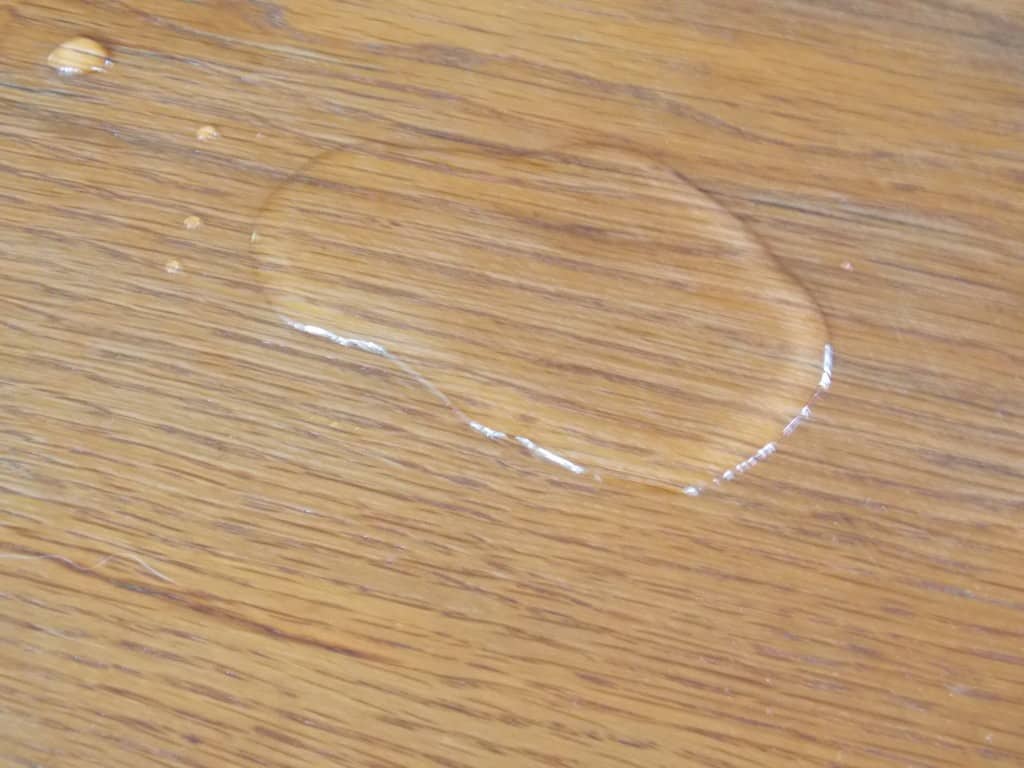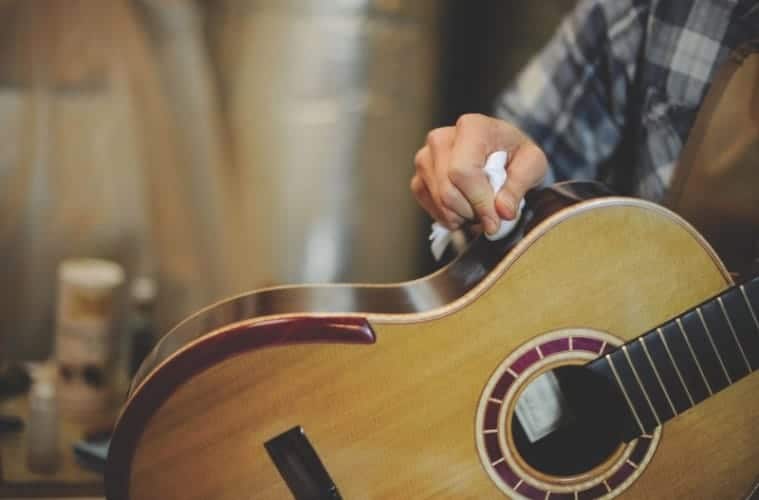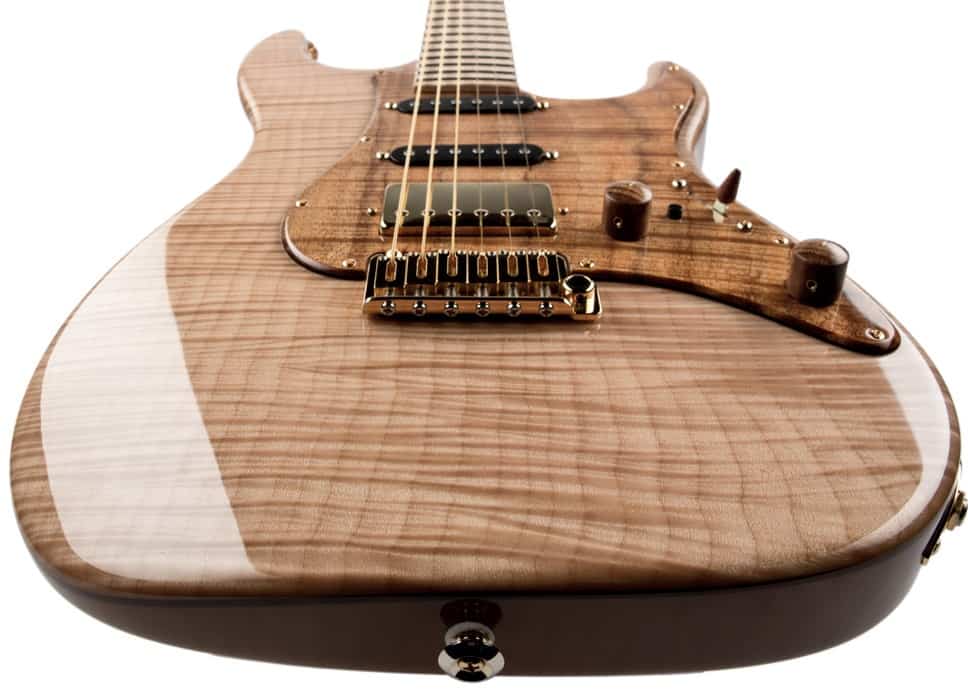- Guitar disassembly process
- Preparation of the wood
- Wood Staining (Optional)
- Contaminated” woods (Optional)
- Finishing coats (Optional)
- Tinting layers (Optional)
- Top coats
- Sanding and Polishing
- Tips & Tricks
Preparation of wood:
- The wood must be free of imperfections and stains.
- Sand with different grades of sandpaper up to P 220-320. Sand in the direction of the grain until no sanding marks are visible.
- Tip for removing the grain: Lightly dampen the wood with a damp cloth, and once it is thoroughly dry, gently sand it with fine sandpaper until the surface is smooth again. The sandpaper will remove the raised fibers, which will no longer cause issues. If you sand too hard, new fibers may come loose, requiring you to repeat the process. In any case, you can repeat the procedure to ensure that all raised grain has been completely removed.
Wood Staining (Optional)
Base Coats (Optional)
-
Apply a coat of NitorAQUA Lacquer diluted to 50% with distilled water. Let it dry for four hours, then sand with P400 sandpaper and apply another coat, this time undiluted. Allow it to dry overnight, and before applying the next finish coat, sand again very gently with P800 sandpaper, following the wood grain. After sanding, it’s recommended to clean the surface with a clean cloth or paper dampened with a 50% solution of water and ethyl alcohol.
-
Note: upon application, the finish will take on a “orange peel” texture. This is normal, and the small “bumps” visible in the freshly applied product will disappear during drying, resulting in a smooth and even coat.
-
Allow 12-24 hours of drying time between each coat. Sand between layers.
Dye Layers (Optional)
It is very traditional to dye the lacquer directly in the guitar finish; furthermore, if solid colors or “sunburst” shading is desired, this is an essencial step.
- It is advisable to sand very gently (P800) before applying the color layers. The surface should be as smooth and even as possible.
- Apply NitorAQUA Lacquer diluted to 30% with distilled water, colored with NitorTINT at a maximum of 5% dye in relation to the lacquer. It is advisable that the dye or color coats are not too concentrated to be applied as thinly as possible in order to achieve the desired tone.
- Apply a maximum of 2 coats per day.
Drying times should be between 12 and 24 hours. Sand between coats to improve the adherence.
- Apply NitorAQUA Lacquer; it does not need to be diluted. The varnish will take on an “orange peel” texture upon application, which is normal, and the small “bumps” visible with the freshly applied product will disappear, resulting in a smooth and even coat. It is essential to be especially careful with this characteristic and not to apply a coat that is too thick in an attempt to “level” it when applying the lacquer. Unlike Nitrocellulose lacquer, the “Eco Guitar” Water-Based Varnish is not transparent when “wet.” This characteristic can be used as a guide for applying each coat. While it applies transparently over the surface in thin layers, if a slight “sheen” is detected when spraying, this is a sign that the coat is sufficiently loaded and no more should be applied.
- NitorAQUA comes ready for application; however, if desired, it can be diluted with distilled water. However, if it is diluted, there is a possibility of more “runs” or “drips.”
- Apply varnish coats, allowing to dry between 12 and 24 hours. Sand with P400 between each coat. The first two coats after the color may not be sanded to minimize the risk of accidentally sanding the color layers.
- Apply 6 to 8 coats, or 4 to 6 if a particularly fine or “open-pore” finish is desired.
Sanding and Polishing
- Allow the finish to “cure” for 3 to 4 weeks, preferably in a well-ventilated and dry area.
- Sand with wet sandpaper to the desired grit. (It is advisable, especially when using automotive polishes, to sand to at least P1500.)
- Once sanded and leveled, let the finish dry for 24 hours.
- Polish, both by hand and with a machine. If polishing with a machine, keep in mind that NitorAQUA is a thermoplastic resin, so it is advisable to avoid excessive heating of the surface being polished. If the finish starts to heat up while polishing, wait for it to cool down again before continuing the process. This will prevent the product from “shrinking” due to excessive temperature.
General Tips and Tricks:
A finish with water-based varnish, depending on factors such as whether the wood is stained or not, and how many color layers are applied, should have a total of 6 to 12 coats in total, including base – color – finish, with a minimum of 5 coats of translucent finish. This will result in an approximate thickness of 150 microns (0.15 mm), depending on how much sanding is done, how much lacquer is applied in each coat, and what thickness of finish is desired. If an instrument has not been finished before, it is advisable to apply about 12 to 14 coats to ensure that the finish is not sanded or polished excessively, leaving areas with “bare” wood. As experience with the product and finishing method increases, fewer coats will be needed, allowing for finer finishes.
The first coats of the final finish may have a “satin” effect as they dry. Generally, as successive coats are applied, the “Eco Guitar” Water-Based Varnish will develop a glossy appearance. However, if it retains a satin appearance, this will be removed during the sanding and polishing process, after which it will offer a clear and shiny look.
If you decide not to use a base coat, you can apply a first layer of water-based varnish diluted to 50% with distilled water. This layer should “wet” the wood and penetrate it, promoting the adhesion of the subsequent final finish coats.
If an “open-pore” appearance is desired, the product can be diluted with distilled water to apply fewer solids in each coat. However, it should be noted that this increases the chances of “runs” or “drips,” and drying times will be longer.
The water-based varnish allows for relatively thick coats to be applied without running; however, it is recommended to apply it in a very atomized manner, ensuring that each “strip of paint” (if applied with a spray gun) overlaps or “mounts” 1/3 to half of the previous coat to achieve a uniform layer.
If an accidental “run” or “drip” occurs during application, allow the finish to dry (for about five hours or overnight) and then level it by sanding with P400 sandpaper, preferably using a hard sanding block. You can also “cut” the drip with a razor blade, which is a faster method that helps avoid the accidents that can result from excessive sanding.
To familiarize yourself with the process, it is advisable to conduct tests on scrap wood to assess the characteristics of finishing a guitar with water-based varnish.
It is also advisable to use a “test” surface on which to apply the lacquer layers simultaneously with the piece being finished. A piece of paper taped to a rigid support (wood, thick cardboard) is a suggestion. By first measuring the thickness of the paper with a caliper and then measuring the resulting thickness of the successive layers once dry, you will have a fairly accurate idea of the thickness of the layer being applied, allowing for a better understanding of its thickness. A thickness of 150 to 180 microns (0.15 to 0.18 mm) ensures a fine finish that respects the instrument’s natural vibrations while also protecting it and avoiding excessive thickness.



